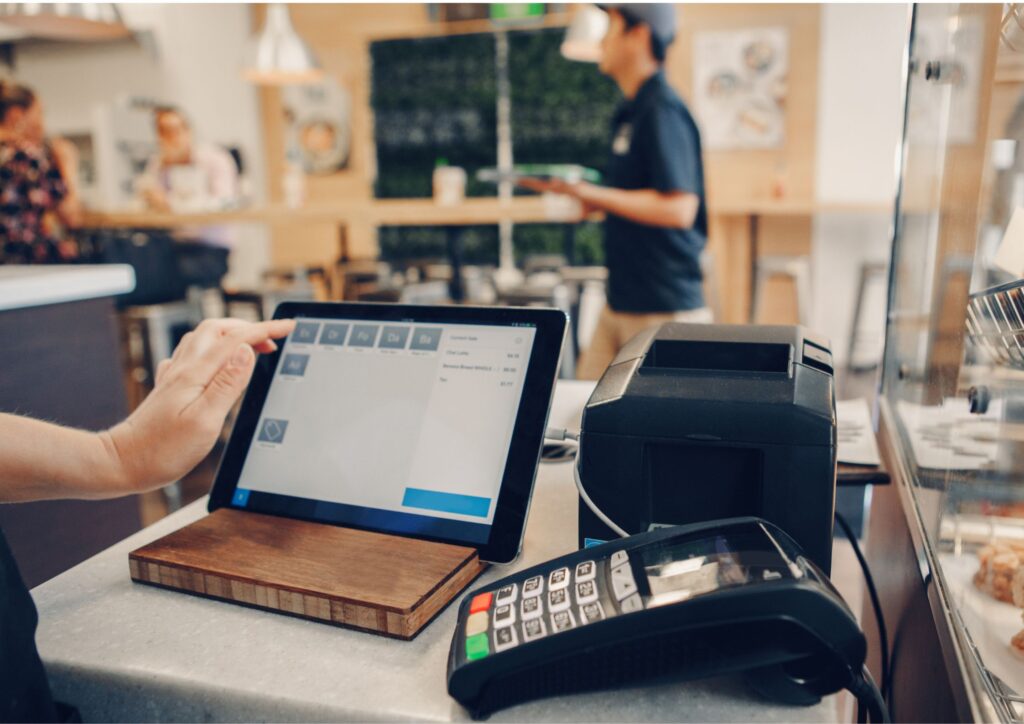How a POS System Can Reduce Human Errors in Transactions

Mistakes in transactions can cost restaurants and retail businesses thousands of dollars every year. From incorrect orders to pricing errors and miscalculations, human errors can lead to lost revenue, dissatisfied customers, and operational inefficiencies. Fortunately, Point of Sale (POS) systems help businesses minimize these mistakes by automating processes and improving accuracy.
In this blog, we’ll explore how a POS system can reduce human errors in transactions, leading to smoother operations and better customer experiences.
1. Eliminating Manual Entry Errors
Traditional cash registers require employees to manually enter prices and calculate totals. This process is prone to mistakes such as:
❌ Entering the wrong price for an item
❌ Misapplying discounts or promotions
❌ Giving incorrect change to customers
A POS system automates price calculations, ensuring that items are always charged correctly. Discounts, taxes, and promotions are applied automatically, eliminating the risk of miscalculations.
🔹 Example:
A cashier at a restaurant accidentally charges a customer $25 instead of $15 for a meal. With a POS system, prices are pre-set, ensuring accurate billing every time.
2. Faster and More Accurate Order Processing
For restaurants, order-taking errors are a common issue, leading to incorrect meals and wasted ingredients. A POS system with digital ordering ensures that:
✅ Orders are sent directly to the kitchen, reducing miscommunication
✅ Servers can select menu items with one click, avoiding handwritten mistakes
✅ Special requests and modifications (e.g., “no onions” or “extra cheese”) are clearly recorded
🔹 Example:
A server mistakenly writes down “Chicken Alfredo” instead of “Vegan Alfredo” on a paper order pad. With a POS system, they can select the correct item from the menu, reducing mix-ups.
3. Automatic Tax and Discount Calculations
Tax miscalculations can result in compliance issues and financial losses. A POS system automatically applies the correct tax rates and discounts, ensuring that every transaction is processed accurately.
Benefits include:
✔️ Elimination of rounding errors in tax calculations
✔️ Accurate application of promotions and loyalty rewards
✔️ Consistency in pricing across multiple locations
🔹 Example:
A grocery store employee manually calculates a 15% discount on a customer’s purchase but accidentally applies only 10%. A POS system automatically applies the correct percentage, preventing revenue loss.
4. Reducing Employee Theft and Fraud
Intentional or unintentional theft can occur when employees manipulate transactions or mishandle cash. A POS system helps prevent fraud by:
✅ Tracking all transactions digitally
✅ Restricting unauthorized price changes or discounts
✅ Monitoring cash drawer activity in real time
🔹 Example:
An employee at a retail store undercharges a friend for an item. With a POS system, managers can review all discounts and ensure proper pricing policies are followed.
5. Improved Inventory Accuracy
Human errors in inventory management can lead to stock discrepancies, affecting both sales and customer satisfaction. A POS system integrates with inventory tracking to ensure:
✔️ Automatic stock updates when items are sold
✔️ Real-time alerts for low stock levels
✔️ Elimination of manual inventory tracking mistakes
🔹 Example:
A bartender at a bar forgets to log a drink that was served, leading to incorrect inventory counts. A POS system updates stock automatically whenever an item is sold, ensuring accuracy.
6. Contactless and Digital Payments for Error-Free Transactions
Handling cash can lead to mistakes in giving change, counting bills, or recording transactions. A POS system supports digital and contactless payments, reducing the risk of cash-handling errors.
Benefits of digital payments via POS:
✔️ Eliminates incorrect cash transactions
✔️ Reduces the risk of counterfeit money acceptance
✔️ Speeds up the checkout process for customers
🔹 Example:
A cashier at a convenience store mistakenly gives a customer $5 instead of $10 in change. With contactless payments, such errors are avoided entirely.
7. Real-Time Reporting and Error Correction
A POS system generates real-time transaction reports, helping managers identify and correct errors quickly. Key features include:
✅ Sales tracking to spot unusual transactions
✅ Error detection alerts for inconsistencies
✅ Automated end-of-day reconciliation for accurate bookkeeping
🔹 Example:
At the end of the day, a restaurant manager notices a transaction discrepancy in the POS system’s report. Instead of manually checking receipts, they quickly locate and correct the mistake in the digital records.
8. Simplifying Employee Training
Training new employees to manually process transactions increases the risk of mistakes. A POS system provides an easy-to-use interface, reducing training time and improving accuracy from day one.
Benefits of a POS system for employee training:
✔️ User-friendly touchscreen interfaces for easy navigation
✔️ Step-by-step prompts to guide new employees
✔️ Reduction in costly errors during training periods
🔹 Example:
A new cashier at a bakery struggles with applying tax manually, leading to incorrect totals. With a POS system, taxes are automatically calculated, eliminating errors.
Final Thoughts
A POS system is an essential tool for reducing human errors in transactions. By automating processes, ensuring accuracy in pricing and inventory, and preventing fraud, businesses can enhance efficiency and customer satisfaction while minimizing financial losses.






